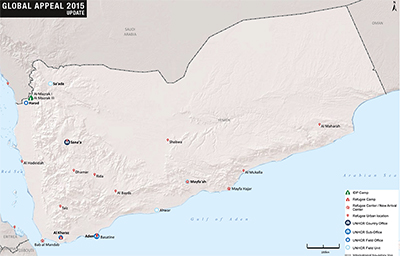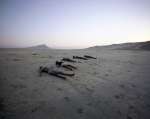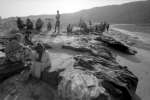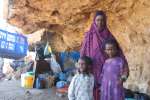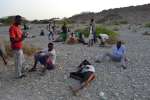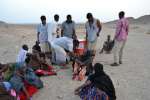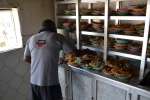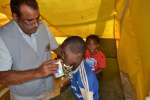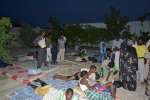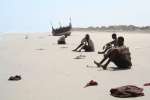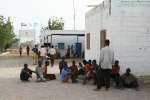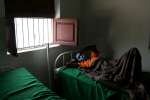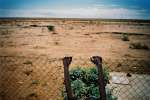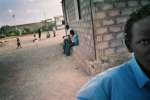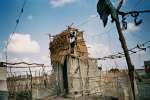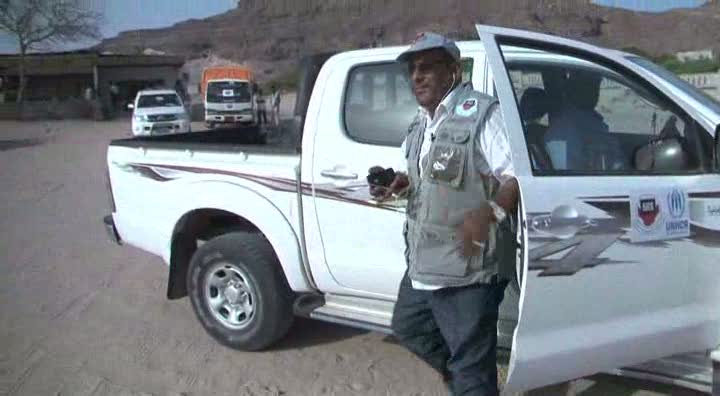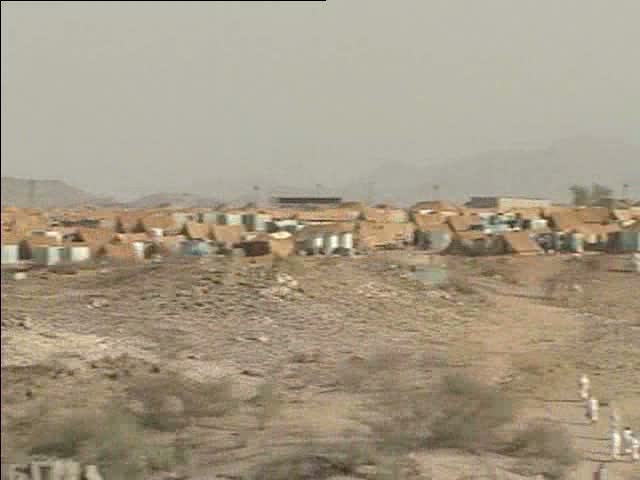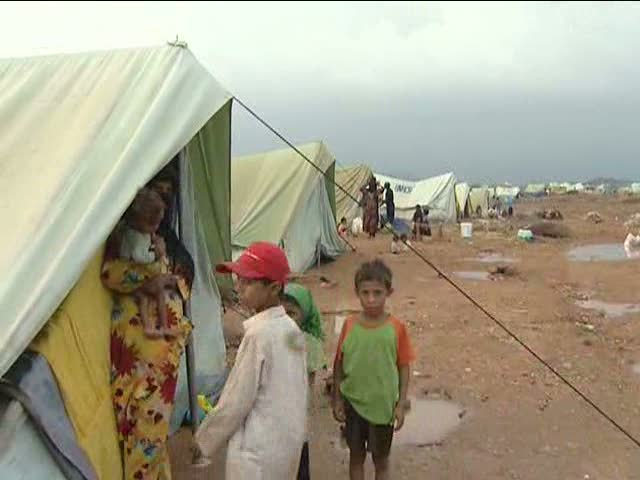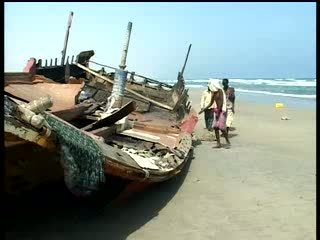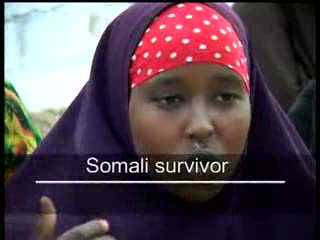Home > Where We Work > Middle East and North Africa > Middle East > Yemen
2015 UNHCR country operations profile - Yemen
| Overview |
Working environment
-
Since 2011, Yemen's transitional Government has been challenged by political instability and insecurity that have further weakened the country's social and economic situation. Internal conflicts - including tribal clashes, attacks and separatist movements - continue to create new displacement.
-
Yemen is a transit country of mixed migration flows, including asylum-seekers and migrants. The country hosts approximately 246,000 registered refugees, 95 per cent of whom are Somalis. The majority of asylum-seekers are from Ethiopia, representing more than three quarters of new arrivals in the first half of 2014.
-
Most Syrians in Yemen remain unregistered, with only some 2,000 having approached UNHCR by mid-2014. As of August 2014, Yemen was granting temporary protection to Syrians, allowing them to access services available to other refugees. More are expected to register.
-
While the number of people internally displaced in Yemen fell by 20 per cent in 2013, mainly due to mass returns to Abyan Governorate in southern Yemen, the numbers increased significantly again in 2014 as a result of ongoing conflicts in the north. As of July 2014, more than 334,000 people were registered as internally displaced.
-
Despite the challenges, Yemen's hospitality towards refugees is remarkable and the country is a signatory to the 1951 Refugee Convention and its 1967 Protocol. Among other contributions, Yemen continues to provide land and security for Kharaz refugee camp, as well as access for refugees to the public health system and education in urban areas.
People of concern
The main groups of concern to UNHCR in Yemen are refugees and asylum-seekers from Ethiopia, Somalia and the Syrian Arab Republic (Syria), as well as IDPs. Somalis, who have fled the civil war which started in 1992, are granted prima facie status by the Government of Yemen. Ethiopians accounted for 52 per cent of registered asylum-seekers by mid-2014. The majority of Ethiopians continue to use Yemen as a transit route to other countries in the region and remain unregistered. Syrians started to arrive in Yemen in 2012 and, since August 2014, the Government has granted them temporary protection. IDPs are mostly located in the northern governorates, where clashes continue.
| UNHCR 2015 planning figures for Yemen | |||||
|---|---|---|---|---|---|
| Type of population | Origin | January 2015 | December 2015 | ||
| Total in country | Of whom assisted by UNHCR |
Total in country | Of whom assisted by UNHCR |
||
| Total | 658,160 | 603,160 | 675,400 | 620,400 | |
| Refugees | Ethiopia | 6,300 | 6,300 | 6,800 | 6,800 |
| Iraq | 3,300 | 3,300 | 3,100 | 3,100 | |
| Somalia | 236,000 | 236,000 | 238,000 | 238,000 | |
| Various | 2,000 | 2,000 | 2,200 | 2,200 | |
| People in refugee-like situations | Syrian Arab Rep. | 12,000 | 12,000 | 15,000 | 15,000 |
| Asylum-seekers | Eritrea | 600 | 600 | 700 | 700 |
| Ethiopia | 7,500 | 7,500 | 7,000 | 7,000 | |
| Various | 460 | 460 | 600 | 600 | |
| Internally displaced | Yemen | 365,000 | 310,000 | 365,000 | 310,000 |
| Returnee arrivals during year (ex-IDPs) | Yemen | 25,000 | 25,000 | 37,000 | 37,000 |
| Response |
Needs and strategies
UNHCR's core strategy in 2015 aims to protect refugees and asylum-seekers, in particular by strengthening refugee status determination (RSD) activities and legal counselling. Detention monitoring and advocacy will be prioritized. The Office will also capitalize on the positive protection space, undertaking joint registration and training activities, as well as promotion of refugee law with the Government.
The Office will continue to seek durable solutions for refugees. Solutions will include resettlement for individuals who face no alternative, and the voluntary repatriation of Somali refugees, on an individual basis and within the regional framework. Social and economic integration will be pursued through the mainstreaming of health and education activities, as well as the promotion of self-reliance and livelihood opportunities.
Technical support will be extended to the Government for its regional coordination and the follow-up and implementation of the Sana'a Declaration, which was adopted in November 2013. The declaration aims to address challenges related to regional mixed migration and refugee flows.
In promoting durable solutions for IDPs, UNHCR, in the context of the UN Country Team, will support Yemen in assuming its responsibility for implementing the national IDP policy. Advocacy and training remain important needs and will be supported by strengthening the community-based protection-monitoring networks. This will enable the internally displaced to better understand their rights and how to obtain available support.
| Implementation |
Coordination
UNHCR will continue to foster relationships with its government counterparts, including the Ministry of Human Rights, the Bureau of Refugees' Affairs, the Ministry of Technical Education and Vocational Training, and the Ministry of Public Health and Population. Project partnership agreements are concluded with key ministries to define the scope of cooperation. Partnerships with NGOs will continue in 2015 and coordination on specific activities with ICRC, IOM, UNDP, UNICEF, WFP, UNOPS and UNV will be maintained. UNHCR will continue as the cluster lead for: protection; camp coordination and camp management; shelter; and non-food items.
| 2015 UNHCR partners in Yemen |
|---|
| Implementing partners |
| Government agencies: Ministry of Education, Ministry of Human Rights, the Executive Unit for IDPs |
| NGOs: Adventist Development and Relief Agency, Al-Amal Charitable Community for Social Welfare, Al-Bena, Association for Developing Persons with Special Needs, CARE, Charitable Society for Social Welfare, Danish Refugee Council, Interaction in Development Foundation, International Medical Corps, International Relief and Development, INTERSOS, Islamic Relief, Norwegian Refugee Council, Society for Humanitarian Solidarity, Solidarity Association for Development (Al Tadamon) |
| Others: IOM, Yemen Red Crescent Society, Sana'a University |
| Operational partners |
| Government agencies: Bureau for Refugees Affairs, Immigration and Passport Authority, Ministry of Foreign Affairs, Ministry of Higher Education, Ministry of the Interior, Ministry of Labour and Social Affairs, Ministry of Public Health and Population, Ministry of Technical Education and Vocational Training, National Committee for Refugee Affairs |
| Others: FAO, ILO, OCHA, Office of the UN Special Envoy for Yemen, OHCHR, UNDP, UNFPA, UNICEF, WFP, WHO |
| Financial information |
In 2015, the financial requirements are set at USD 59.5 million for the operation. This represents an increase of USD 3 million when compared with the revised 2014 budget, and is comparable to the level of the 2011 requirements. In case of funding shortfalls, self-reliance and livelihoods activities will be one of the areas which will have to be restricted. This will only widen the gap in meeting identified needs, despite self-reliance being recognized as a top priority during the 2013 age, gender and diversity mainstreaming assessment. The scale-up of voluntary repatriation would also limit UNHCR's ability to respond to emerging needs.
Source: UNHCR Global Appeal 2015 Update
UNHCR contact information
| The UNHCR Representation in Yemen | |||||||||||||||
|---|---|---|---|---|---|---|---|---|---|---|---|---|---|---|---|
| Style of Address | UNHCR Representative in Yemen | ||||||||||||||
| Street Address | Street No. 38, Off Algerian Street, Building No. 2, Sana'a, Yemen | ||||||||||||||
| Mailing Address | P.O. Box 12093, Sana'a, Yemen | ||||||||||||||
| Telephone | 967 1 469 771 | ||||||||||||||
| Facsimile | 967 1 469 770 | ||||||||||||||
| yemsa@unhcr.org | |||||||||||||||
| Time Zone | GMT + 3 | ||||||||||||||
| Working Hours |
|
||||||||||||||
| Public Holidays | 01 January 2015, New year 22 May 2015, Unity day 19 July 2015, Eid al fitr 20 July 2015, Eid al fitr 21 July 2015, Eid al fitr 24 September 2015, Eid Al Adha 27 September 2015, Eid Al Adha 28 September 2015, Eid Al Adha 15 October 2015, Islamic Newyear 24 December 2015, Christmas |
||||||||||||||
| Kharaz | |||||||||||||||
|---|---|---|---|---|---|---|---|---|---|---|---|---|---|---|---|
| Style of Address | The UNHCR Chief of Mission in Kharaz | ||||||||||||||
| Street Address | Kharaz Camp, C/O of UNHCR SO, Aden, Yemen | ||||||||||||||
| Mailing Address | P.O.BOX 6090, Kharaz, Aden, Yemen | ||||||||||||||
| Telephone | 967 2 820844 | ||||||||||||||
| Facsimile | 967 2 820844 | ||||||||||||||
| yemad@unhcr.org | |||||||||||||||
| Time Zone | GMT + 3 | ||||||||||||||
| Working Hours |
|
||||||||||||||
| Public Holidays | 01 January 2015, New year 22 May 2015, Unity day 19 July 2015, Eid al fitr 20 July 2015, Eid al fitr 21 July 2015, Eid al fitr 24 September 2015, Eid Al Adha 27 September 2015, Eid Al Adha 28 September 2015, Eid Al Adha 15 October 2015, Islamic Newyear 24 December 2015, Christmas |
||||||||||||||
| The UNHCR Field Office at Mayfa'a | |||||||||||||||
|---|---|---|---|---|---|---|---|---|---|---|---|---|---|---|---|
| Style of Address | The UNHCR Chief of Mission in Mayfa'a | ||||||||||||||
| Street Address | Mayfa'a Camp, C/O UNHCR SO, Aden, Yemen | ||||||||||||||
| Mailing Address | P.O.BOX 6090, Mayfa'a, Aden, Yemen | ||||||||||||||
| Telephone | 967 5 280267 | ||||||||||||||
| yemad@unhcr.org | |||||||||||||||
| Time Zone | GMT + 3 | ||||||||||||||
| Working Hours |
|
||||||||||||||
| Public Holidays | 01 January 2015, New year 22 May 2015, Unity day 19 July 2015, Eid al fitr 20 July 2015, Eid al fitr 21 July 2015, Eid al fitr 24 September 2015, Eid Al Adha 27 September 2015, Eid Al Adha 28 September 2015, Eid Al Adha 15 October 2015, Islamic Newyear 24 December 2015, Christmas |
||||||||||||||
| The UNHCR Field Office in Amran | |||||||||||||||
|---|---|---|---|---|---|---|---|---|---|---|---|---|---|---|---|
| Style of Address | The UNHCR Head of Field Office in Amran | ||||||||||||||
| Street Address | Hajjah Street, Next to Amran Public Electicity Office, Amran, Yemen | ||||||||||||||
| Mailing Address | P.O. Box 12093, Amran, Yemen | ||||||||||||||
| Telephone | 967 7 603 204 | ||||||||||||||
| Facsimile | 967 7 603 204 | ||||||||||||||
| yemsa@unhcr.org | |||||||||||||||
| Time Zone | GMT + 3 | ||||||||||||||
| Working Hours |
|
||||||||||||||
| Public Holidays | 01 January 2015, New year 22 May 2015, Unity day 19 July 2015, Eid al fitr 20 July 2015, Eid al fitr 21 July 2015, Eid al fitr 24 September 2015, Eid Al Adha 27 September 2015, Eid Al Adha 28 September 2015, Eid Al Adha 15 October 2015, Islamic Newyear 24 December 2015, Christmas |
||||||||||||||
| The UNHCR Field Office in Haradh | |||||||||||||||
|---|---|---|---|---|---|---|---|---|---|---|---|---|---|---|---|
| Style of Address | The UNHCR Head of Field Office in Haradh | ||||||||||||||
| Street Address | Haradh District, Tabza Village, Hajjah Government, Haradh, Yemen | ||||||||||||||
| Mailing Address | P.O. Box: 12093, Sana'a, Yemen | ||||||||||||||
| Telephone | 967 7 246451 | ||||||||||||||
| yemsa@unhcr.org | |||||||||||||||
| Time Zone | GMT + 3 | ||||||||||||||
| Working Hours |
|
||||||||||||||
| Public Holidays | 01 January 2015, New year 22 May 2015, Unity day 19 July 2015, Eid al fitr 20 July 2015, Eid al fitr 21 July 2015, Eid al fitr 24 September 2015, Eid Al Adha 27 September 2015, Eid Al Adha 28 September 2015, Eid Al Adha 15 October 2015, Islamic Newyear 24 December 2015, Christmas |
||||||||||||||
| The UNHCR Sub-Office at Aden | |||||||||||||||
|---|---|---|---|---|---|---|---|---|---|---|---|---|---|---|---|
| Style of Address | The UNHCR Head of Sub-Office at Aden | ||||||||||||||
| Street Address | HOSHI MANA Street, Beside German Consulate,, Shopping area-Building no. 27 & 28, Khormakser, Aden, Yemen | ||||||||||||||
| Mailing Address | P.O. Box 6090, Aden, Yemen | ||||||||||||||
| Telephone | 967 2 23 14 41 | ||||||||||||||
| Facsimile | 967 2 23 44 06 | ||||||||||||||
| yemad@unhcr.org | |||||||||||||||
| Time Zone | GMT + 3 | ||||||||||||||
| Working Hours |
|
||||||||||||||
| Public Holidays | 01 January 2015, New year 22 May 2015, Unity day 19 July 2015, Eid al fitr 20 July 2015, Eid al fitr 21 July 2015, Eid al fitr 24 September 2015, Eid Al Adha 27 September 2015, Eid Al Adha 28 September 2015, Eid Al Adha 15 October 2015, Islamic Newyear 24 December 2015, Christmas |
||||||||||||||

